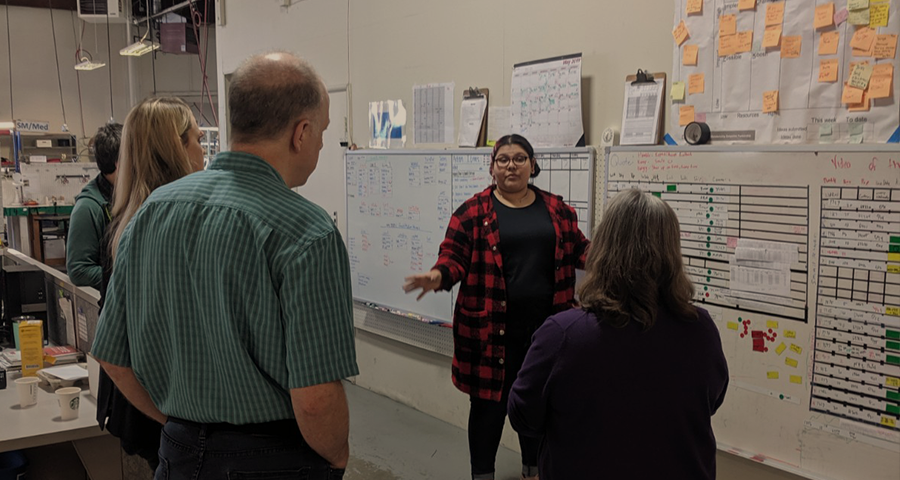Many employers focus on salary and benefit packages as a way to attract new hires and retain existing employees. These are table-stakes in today’s economy. Smart manufacturing companies know they need to offer benefits beyond salaries and healthcare. But what?
Career planning for employees is key to building employee loyalty, engagement and attracting new employees. “…the lack of future career development remains a key driver of employee attrition — cited by 40% of departing employees as a dissatisfying factor in their job…” (GARTNER)
When an employee can see their path toward growth mapped out, the benefits are many. Here are just a few:
-
Differentiates you from your lab or market competitors
- imagine being able to sit down with a new hire, and show them all the possible future paths they can take beyond their current role.
-
Helps you retain key workers
- Allow existing employees to blossom, pursue areas of interest, and have clarity around how they can advance in their careers and salariess with a learn to earn model
-
Attracts and retains younger workers
- Give new workers a clear idea of what they can accomplish.
-
Decreases turnover after an economic downturn
-
Allows employees to take ownership of their own development
- Imagine being able to provide up-to-date, structured, custom training for each of your employees that they can take on their own time, at their desired pace. Remove the administrative burden of this by implementing a cloud-based LMS tool.
-
Encourages development and performance conversations
Perhaps you have a few questions along the way about career paths. Here are some common questions I’m asked by manufacturers on a regular basis.
What is a career path?
A career path is a sequence of work experiences and job assignments that provide employees opportunities to participate in many aspects of a professional or company career ladder. Essentially, it is a structured sequence of job positions through which a person progresses in an organization.
Download a Sample Career Path Model
I want to establish career paths in my manufacturing company – what approach do I take?
There are a number of approaches you can take to create career paths within your company. Some are very complex and others less so. Three of the most common career paths are based on Historical, Organizational, and Behavioral approaches.

There is not a one size fits all answer to this question. What works best for your company may not work for another manufacturer. Success is very dependent on the maturity level and organizational readiness of a company. No matter which method you follow, the significant benefits of having a clearly defined career path do not change.
Job Task List Download
Do I need advanced technology to put my development paths together?
Paper is a useful tool for career path development and modeling. It is better to start with the tools you have in front of you. However, if you want to track and administer training for employees as they progress through their available paths, maintain standard work documents, and keep training materials up to date, technology is your friend. Using a tool such as a Learning Management System (LMS) can take the friction out of these practices and automate the administration tasks associated with career path development. If you’d like to explore options for small and mid-sized manufacturers, the OMEP cloud is a useful tool. LEARN MORE >
How do I keep my manufacturing employees engaged?
Ultimately, employees are responsible for the development of their own careers, if you give them the opportunity to do so. Employees can be some of your biggest company brand ambassadors —If they are satisfied. The great reshuffle has made this more clear than ever.
Creating a positive work environment with an actual path to advancement helps keep current employees happy and builds your organization’s talent.
People within your company need to understand that they have room to grow and that efforts are being made to facilitate their career growth. The ultimate goal of setting up a career pathway for your manufacturing employees is to create loyalty. This loyalty will be based on thinking beyond salaries, fostering employees who genuinely care about your business and collective success.
Some of our clients have begun to work on career pathway mapping for employees, with dramatically successful results. Learn More >




